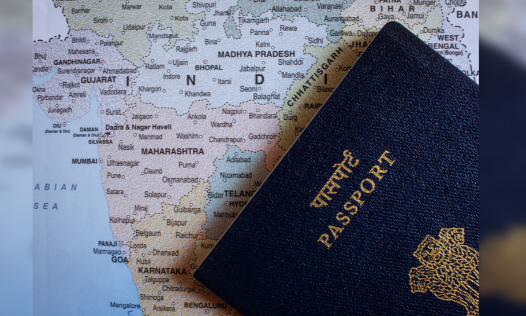Payment is being processed. Please do not refresh or close this page until your payment is complete.
 Book an Appointment
Book an Appointment

If you're applying for a passport in 2025, don't miss these important updates from the Ministry of External Affairs. From barcode-based addresses to mandatory birth certificates and simplified name change rules, here's everything you need to know.
If you’re planning to apply for a new passport, renew your current one, or make changes to an existing passport in 2025, it’s important to be aware of the latest updates. The Ministry of External Affairs (MEA) has introduced several changes aimed at improving convenience, security, and inclusivity for Indian passport holders.
Revised Passport Rules Announced by MEA
The Ministry of External Affairs (MEA) has introduced new passport rules effective from February 24, 2025. These changes are designed to simplify documentation, enhance security, and align with global travel standards.
• The goal is to simplify and streamline document requirements.
• Updates align India’s passport system with global travel norms.
• New design enhances user experience and safety during travel.
Here’s a breakdown of all the new passport rules for easy understanding.
1. New Passport Design with Enhanced Security
Indian passports now feature a modernised design with improved layout and advanced security features. This upgrade reduces risks of forgery, speeds up identity verification, and meets international travel documentation norms.
• Aims to make international travel more secure and efficient.
• Reflects international standards for data protection.
• Helps reduce forgery and duplication risks.
2. Address Details Moved to Barcode Format
In a major privacy-focused update, the passport’s last page will no longer display the holder’s residential address. Instead, the address will be embedded securely within a barcode accessible to officials only.
• Instead, address details will be embedded in a scannable barcode.
• Only immigration and security officials can access it.
• Enhances privacy and personal data security for passport holders.
3. Parents’ Names Removed from Passport
To support evolving family structures, especially single-parent households, the passport will no longer include parents’ names on the last page. This change encourages inclusivity and respects diverse family backgrounds.
• Parents’ names will no longer appear on the last page.
• Reduces unnecessary disclosure of family background.
• Supports diverse family structures and legal guardianship scenarios.
4. New Colour-Coded Passport System Introduced
A four-tier colour system will now identify passport categories more clearly: red for diplomats, white for government officials, blue for ordinary citizens, and grey for emergency travel documents and repatriation.
• Red: Diplomatic passport holders
• White: Government officials
• Blue: Regular passport for the general public
• Grey: Emergency travel documents
This classification will help in faster processing at immigration counters and embassies.
5. Birth Certificate Now Mandatory for Some Applicants
For individuals born on or after October 1, 2023, only a government-issued birth certificate will be accepted as valid proof of date of birth when applying for a new passport in 2025.
• Other documents will not be considered valid for this group.
• This move standardises the verification process.
6. Relaxed Rules for Applicants Born Before October 1, 2023
Applicants born before October 1, 2023, can continue submitting alternative documents like school leaving certificates, PAN cards, or voter IDs as valid proof of birth, ensuring flexibility in the application process.
• Acceptable documents include:
o School leaving certificate
o PAN card
o Voter ID
o Driving licence
o Government service records
This ensures a smoother transition to the new rules without excluding older applicants.
7. Name Change After Marriage Made Simpler for Women
Women who wish to update their passport post-marriage no longer need a marriage certificate. Annexure J now allows easier addition of a spouse’s name with minimal documentation, saving time and effort.
• The new Annexure J form streamlines the process.
• Makes it easier to add a spouse’s name during or after marriage.
• Reduces paperwork and promotes women’s autonomy.
Final Thoughts
These updates are part of India’s ongoing efforts to modernise passport services, making them more secure, inclusive, and globally compatible. Whether you’re applying for the first time or updating your existing passport, it’s essential to understand these rule changes to avoid delays.
Source: https://travelobiz.com/apply-indian-passport-2025-new-rules-explained/